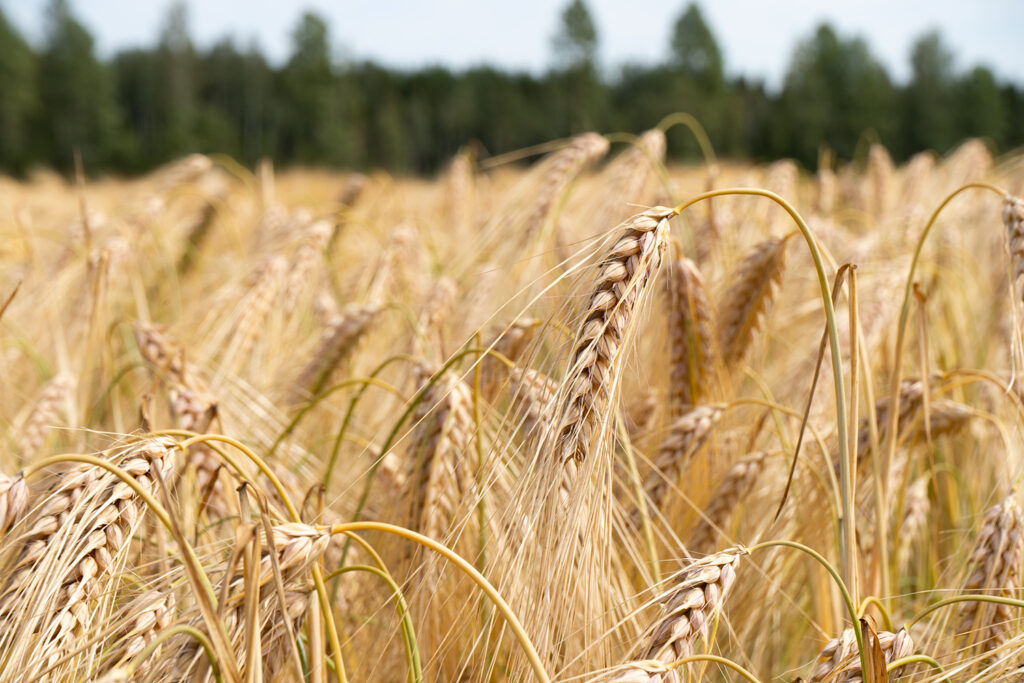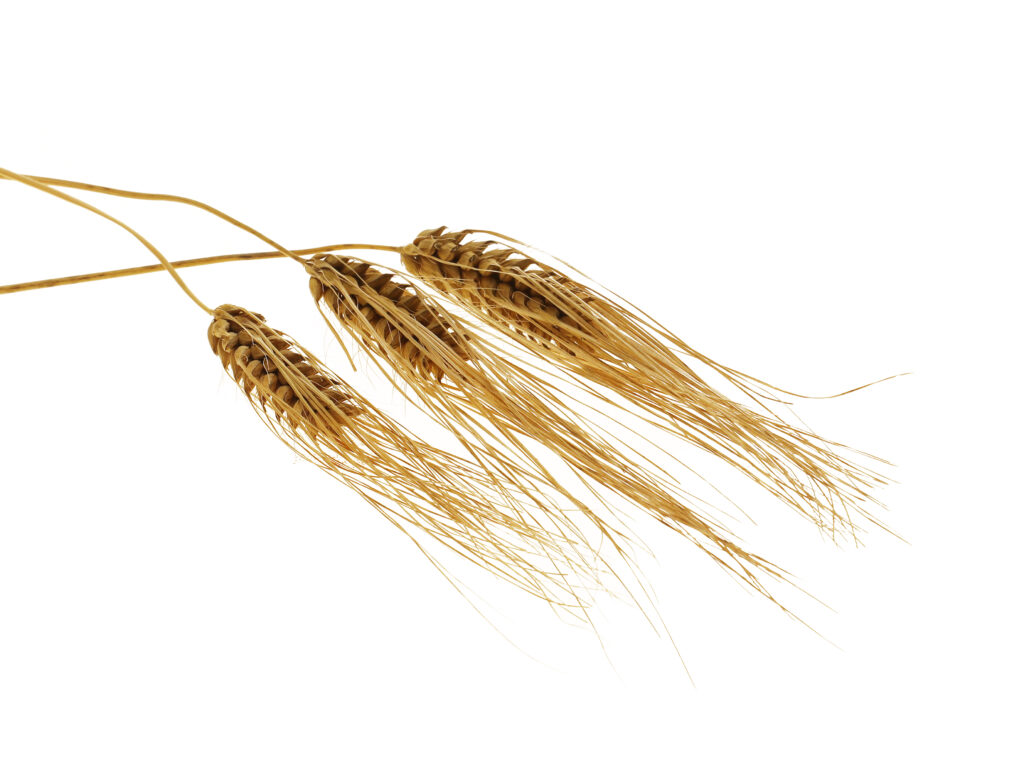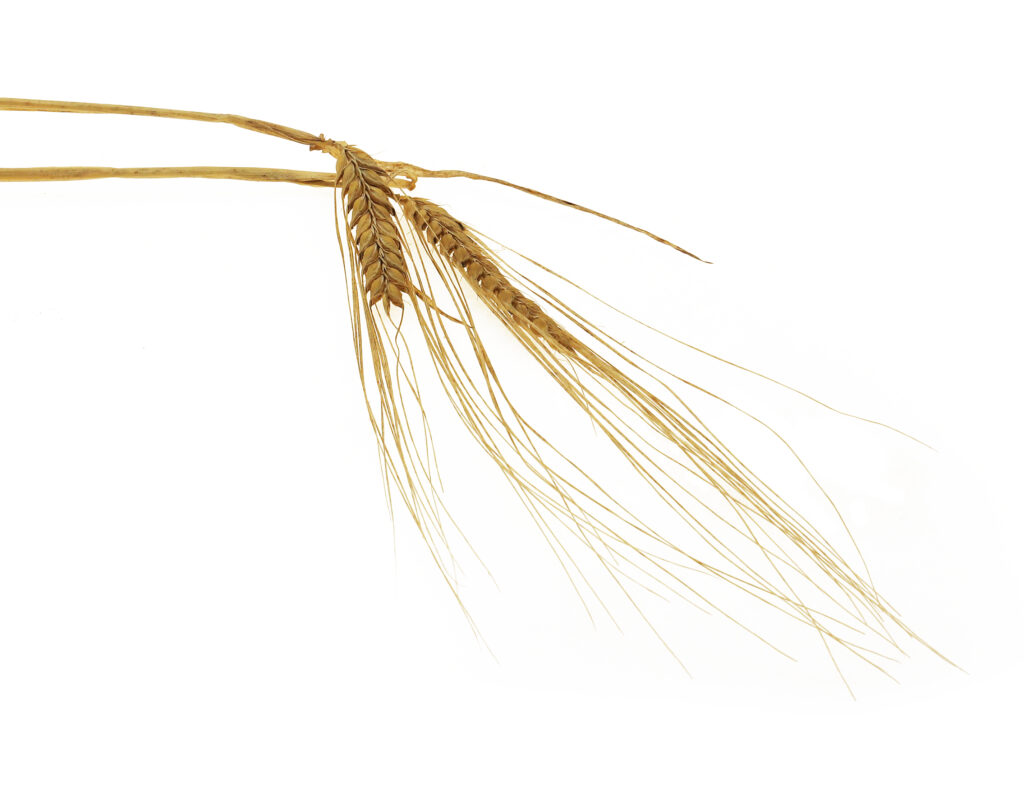


Barley
Barley is the fourth most widely cultivated cereal species in the world and is the most widely cultivated cereal species in Norway. It is grown on about 45% of the land utilised for Norwegian cereal production. Almost all barley grown in Norway is used in animal feed production.
The barley species is easily recognizable because of the long awns that protrude from each grain. The seeds are edible and are used for human consumption, feed for animals and malt for beer and liquor production. The species is divided into the two subspecies: six-row barley and two-row barley.
Two-row barley has one large and two smaller sterile seeds in each small axil, while six-row barley has three smaller seeds in each. Two-row barley usually ripens later than six-row barley but is hardier and tends to have a higher yield potential. The names come from how the seeds are placed on the plant. Two-row barley has the seeds placed in two rows with adjacent seeds, while six-row barley has six rows of seeds going around the spike.
Graminor’s barley breeding and variety representation
Until 2013 Graminor focused only on breeding new varieties of six-row barley. In 2013 the company started breeding new varieties of two-row barley for the Nordic climate. Plant breeding is a long process that takes many years, and it is hoped to make the first variety from Graminor’s two-row barley breeding program available in the next few years.
In 2020 the Norwegian barley market consisted of 55% six-row barley. Of this, 96% of the six-row barley grown in Norway in 2020 was from varieties developed by Graminor.

Traditionally, the variety development program is based on the pedigree method with line selection. We choose lines with desired traits and cross them to create variation. Over several generations, we select lines with desired traits while discarding those that exhibit undesirable or weak characteristics. We observe agronomic traits and yield in field trials, and we test and examine grain quality in laboratories. Cumulatively, these measurements allow us to choose the best lines that can become future Norwegian barley varieties with improved yield, appropriate maturity, strong straw properties, and greater disease resistance than the preceding varieties.
In addition to the traditional pedigree method, we employ various newer technological methods to create even better varieties in the future and to make the variety development process more efficient. One such method is Marker-Assisted Selection, abbreviated as MAS. It is a molecular biological method based on genotyping, which involves gene mapping.
MAS is used to make more efficient decisions about which lines should proceed in the development and selection process. The method involves identifying genes that indicate, for example, strong resistance to a specific disease. If these genes, called markers, are found, the least resistant varieties can be discarded at an early stage. Previously, all varieties had to be grown in fields for several seasons, relying on disease spread to determine which are strong and which are weak. Now, we can accomplish much of that work with a single test.
In addition to our own variety development, Graminor also tests and represents foreign barley varieties in Norway. We make the best-suited varieties for the Norwegian climate available to Norwegian farmers.
Primary goals for new Norwegian barley varieties:
- High yield
- Good straw strength and straw quality
- Resistance to fungal diseases
- Early ripening
Les mer om Graminor sine byggsorter i vår sortsvelger
Meet the barley team








